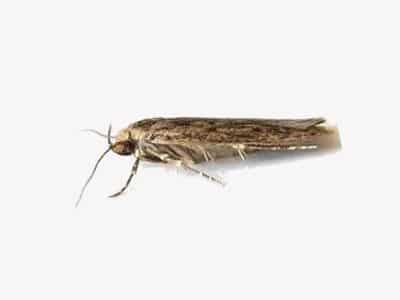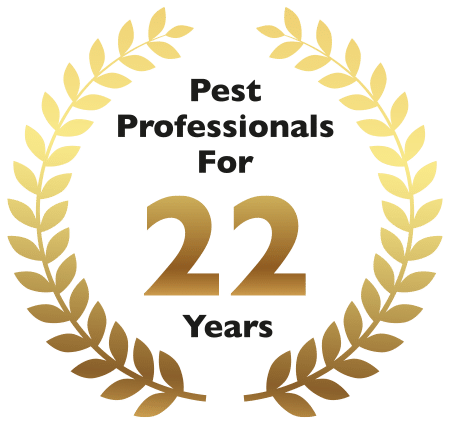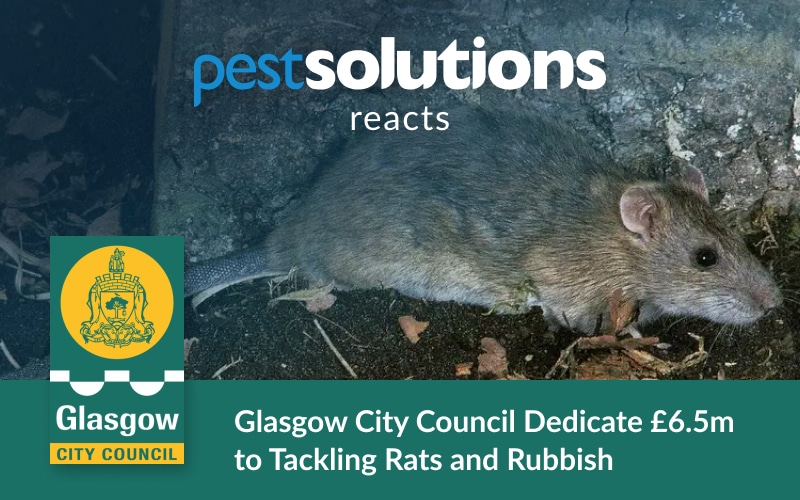About Varied Carpet Beetles
The varied carpet beetle (Anthrenus verbasci) is tiny, yet tenacious household pest known for infesting and causing damage to fabrics and stored goods. With their distinctive appearance, diverse diet, and secretive behaviour, these beetles have earned their reputation as a common nuisance in homes, museums, and storage spaces worldwide.
Pest Solutions are here to help with varied carpet beetle problems. Get the details of your local Pest Solutions Branch here or call our national advice line on 0800 027 2555 to arrange a FREE survey or a service visit.
Identifying Varied Carpet Beetles
Varied carpet beetles are small insects, typically measuring between 2-4mm in length with a distinct, elongated, and oval-shaped body. Their bodies are covered in colourful scales, with a pattern of white, yellow, and black scales creating a mottled appearance. Adult beetles have clubbed antennae that are easily noticeable.
The larvae of varied carpet beetles are typically 4-5mm in length, and have a narrow, carrot-shaped body covered in fine, bristle-like hairs. The hairs give them a fuzzy or hairy appearance, giving them the nickname “woolly bears”.
Signs of Varied Carpet Beetle Infestation
One of the most noticeable signs of a varied carpet beetle infestation is the damage they cause to textiles and soft furnishings. Look for irregular holes, chewed areas, and loose fibres in clothing, curtains, carpets, rugs, upholstery and blankets. The damage often appears as random, scattered holes which can vary in size.
As varied carpet beetle larvae grow, they go through multiple moults, shedding their exoskeletons. These cast-off larval skins are a clear indicator of an infestation. They look like tiny, brown or tan, hollow shells and are often found near infested materials or in hidden, undisturbed areas where larvae feed.
Beyond textiles, varied carpet beetles can also infest stored goods such as dried pet food, grains and spices. Check these items for signs of damage or larvae, especially if they are stored for long periods in dark or neglected spaces.
Adult varied carpet beetles are attracted to sources of light, so you may notice these small, oval-shaped beetles with distinctive colour patterns crawling around your home, particularly near windows or light fixtures.
Varied Carpet Beetle Biology & Lifecycle
The varied carpet beetle undergoes a complete metamorphosis which includes 4 life cycle stages: Egg, Larva, Pupa and Adult.
Female beetles lay eggs, usually in or near a food source, such as animal-based textiles or stored products. The eggs are small, white, and oval in shape. The eggs will hatch and varied carpet beetle larvae will emerge.
The larval stage is the most destructive stage of the lifecycle. Larvae immediately begin feeding on the available food source. During this stage, they cause damage to textiles, fabrics, and stored products by chewing and consuming them. The larval stage can last several months to a few years, depending on factors like temperature, humidity, and food availability.
Larvae are elongated, typically 4-5mm long, with fine, bristle-like hairs, giving them their nickname “woolly bears”. Larvae undergo a series of moults as they grow. Each moult involves shedding their exoskeleton to accommodate the larva increasing in size.
Once larval development is complete, varied carpet beetle larvae enter the pupal stage. At this stage, they undergo a transformation into adult beetles. Pupation occurs inside a cocoon-like structure, often camouflaged with their shed larval skins and other debris. This stage can last for a few weeks to several months.
Eventually, adult varied carpet beetles will emerge from pupas. Their primary purpose as adults is to mate and reproduce, and they do not cause damage to textiles or stored products.
Varied Carpet Beetle Behaviour
Varied carpet beetle larvae are voracious feeders and are responsible for causing damage to textiles and stored products. They primarily feed on animal-based materials, such as wool, silk, feathers, fur, and leather. As such, they are a common household pest in the UK, known for causing damage to textiles and soft furnishings such as clothing, curtains, carpets, rugs, upholstery and blankets.
While their preferred diet consists of animal-based textiles, when these materials are not available, they can infest and feed on stored products like dried pet food, grains and spices.
Risk of Varied Carpet Beetle Infestation
Varied carpet beetles pose the greatest risk to items made from natural animal-based textiles. These include wool, silk, feathers, fur, and leather. These materials provide an abundant source of the protein keratin, which is the primary dietary component for the larvae.
In addition to textiles, these beetles can infest and damage stored food products. Grains, cereals, dried pet food, and spices are all susceptible to infestation when available or other food sources are limited. Once into adulthood, carpet beetles will instead feed on pollen in a similar fashion to many other garden bugs.
Significance of Controlling Varied Carpet Beetles
Varied carpet beetles are known for their destructive feeding habits, particularly in the larval stage. They can cause significant damage to various items within your home, including clothing, carpets, rugs, upholstery, as well as stored food products like grains and spices and even dead insects.
The damage they inflict often results in unsightly holes, weakened fabrics, damaged carpet edges and a decrease in the quality and lifespan of affected materials. This can lead to the need for costly repairs or replacements. Carpet beetles and clothes moths are perhaps the top most destructive insect pasts in terms of the damage they can do to an infested item in a short period of time.
Infestation by varied carpet beetles can exacerbate allergen concerns for individuals with allergies or sensitivities. The bristle-like hairs on the larvae can break off and become airborne, potentially causing respiratory issues and allergic reactions in sensitive individuals. Additionally, the presence of allergenic beetle proteins in shed skins and faecal matter can further contribute to respiratory issues in susceptible people.
Controlling Varied Carpet Beetle Infestations
If a varied carpet beetle infestation is discovered, where possible, infested materials or contaminated items should be isolated and removed to prevent the infestation spreading further. The affected area should be cleaned thoroughly with special attention paid to cracks, crevices and other areas of harbourage.
In most cases, if a population of varied carpet beetles is already established within your property, treatment by a qualified pest management professional will be required. Each situation is different, but a professional pest control operator will be able to establish the best course of action in each case, be it insecticide use, proofing, or another approach.
Preventing Varied Carpet Beetle Infestations
Maintaining a clean and dust-free home can discourage varied carpet beetles. Regular vacuuming, washing and dusting can remove potential food sources and disrupt their preferred environments.
Vacuum carpets, rugs and upholstery often to remove potential food sources like hair, skin flakes and debris. Pay close attention to dark and undisturbed areas where larvae may hide, such as the edges of carpets, underneath furniture and inside cupboards.
Pay particular attention along carpet edges and in cracks and crevices as these are the areas where carpet beetles are more likely to lay their carpet beetle eggs.
DIY Pest Control for Beetles
Good hygiene can be effective in preventing varied carpet beetle infestations. However, if an infestation is already established, it is likely that professional assistance is required.
DIY pest control methods often focus on eliminating visible pests without addressing the underlying causes of the infestation. This can lead to incomplete eradication, as hidden or undetected pests and breeding sites remain untouched.
Failure to control a varied carpet beetle infestation can lead to secondary infestations. Once these beetles have established themselves in your home, they can spread to other areas and materials. This may result in the need for more extensive and costly pest control treatments. Controlling varied carpet beetle quickly helps prevent them spreading to other parts of your home and minimises the risk of further infestation of stored products or materials.
When to Call a Professional for Beetle Control
For effective varied carpet beetle control, especially in the case of extensive infestations or damage to valuable items, it’s advisable to consult with a qualified pest management professional. Professionals can accurately identify the problem, implement appropriate treatments, and provide guidance on preventive measures to ensure long-term pest management.
We deal with all species of beetle including varied carpet beetles, furniture carpet beetles and all other species of carpet beetles.
Call Pest Solutions to Get Rid of Beetles Today!
Pest Solutions have local Branches across Scotland, England, Wales and Northern Ireland. Our expert local techs are at hand to attend today. Call now to get an experienced Pest technician visit and get that Pest problem under control swiftly.
Get the details of your local Pest Solutions Branch here or call our national advice line on 0800 027 2555 to arrange a FREE survey or a service visit.
Find out more about how to get rid of Varied Carpet Beetles



















